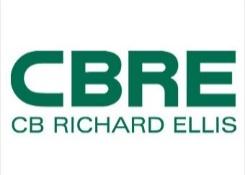Frequently Asked Questions
Property Tax Questions & Answers
R&A has a highly experienced staff.
- The average experience for an R&A team member is 22 years.
- Our staff consists of 4 Licensed Senior Property Tax Consultants. Their average experience is over 31 years.
Our clients can rest assured that their real estate tax matters are in good hands.
Rainbolt & Alexander, Inc maintains flexible fee agreements with our clients. Clients can choose from 4 different fee structures depending on their individual preference:
- Performance Fee – fee is based on a percentage of tax savings achieved
- Flat Fee – an annual amount tailored specifically for each property
- Blended Fee – combination of a Performance Fee and an Administrative Fee
- Hourly Rate
The property tax system in Texas consists of three main parts:
- Appraisal Districts – Each county has an appraisal district which is responsible for establishing the value of property each year.
- Appraisal Review Board – This board of citizens hears any disagreements between a property owner and the appraisal district about property valuations.
- Local Taxing Units – County, City, School, Junior College, and Special Districts determine the amount of money they will spend by adopting a budget. Then, they set tax rates that will raise the necessary revenue to fund the budgets.
The property tax year can be broken down into four main parts:
- Appraising Taxable Property – A major function of appraisal districts is to determine what your property is worth as of January 1.
- Protesting the Appraised Values – The Appraisal Review Board begins to hear protests in mid-May from property owners who believe their property values are incorrect.
- Adopting the Tax Rates – Tax Rates are adopted around August or September by the elected officials of each taxing unit.
- Collecting the Taxes – Collecting taxes begins around October 1 as tax bills are sent out. Taxpayers have until January 31 of the following year to pay their taxes. Penalty and interest begin to accumulate on February 1.
Unequal appraisal occurs when similar properties are assessed differently, and is a common argument made by the protesting party in appeal hearings.
Section 41.43 of the Texas Property Tax Code provides the basis for an appeal on unequal appraisal and is as follows:
“a protest on the ground of unequal appraisal of property shall be determined in favor of the protesting party unless the appraisal district establishes that: the appraised value of the property is equal to or less than the median appraised value of a reasonable number of comparable properties appropriately adjusted.”
The deadline in Texas is the later of May 15, or 30 days after the appraisal district sends the notice of assessed value.
Please contact us if you have a question about another specific property tax deadline.
Yes. Section 41.411 addresses the issue “Failure to Receive Notice” and allows for a protest to be filed:
§ 41.411. PROTEST OF FAILURE TO GIVE NOTICE. (a) A property owner is entitled to protest before the appraisal review board the failure of the chief appraiser or the appraisal review board to provide or deliver any notice to which the property owner is entitled. (b) If failure to provide or deliver the notice is established, the appraisal review board shall determine a protest made by the property owner on any other grounds of protest authorized by this title relating to the property to which the notice applies. (c) A property owner who protests as provided by this section must comply with the payment requirements of Section 42.08 or he forfeits his right to a final determination of his protest.
“Market value” represents what the appraisal district believes your home could be sold for on the open market as of January 1.
“Appraised value” is the actual amount that taxes are levied against to determine how much you pay in property taxes. The appraised value is less than the market value in the event that an appraisal cap limit annual valuation increases to a maximum of 10%.
Annual Tax Saving Results
What Our Clients Are Saying
Clients






















